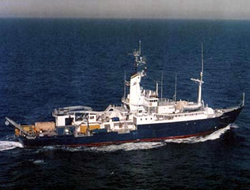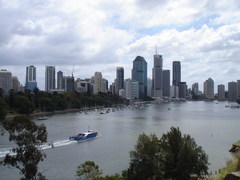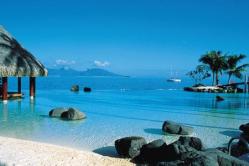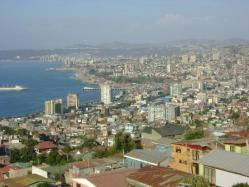Please note: You are viewing
the unstyled version of this website. Either your browser does not support CSS
(cascading style sheets) or it has been disabled. Skip
navigation.
Welcome. It is wonderful to have you here on our website. We hope you will enjoy following along with us on this voyage across the South Pacific where we will be looking for oceanic responses to climate change. Some of you are students at schools near where I work in Woods Hole Massachusetts, while others are visitors from further away. So even as I begin write, I realize that much of what I say must be explained. For this reason, along with our own comments and stories, we will try to include as many links to definitions, explanations and other interesting web sites as we can. Here, we will provide information and pictures from this 2009-2010 oceanographic expedition aboard the R/V Melville along 32°S in the Pacific. We will travel over 10,000 miles (~17,000 km) as we leave from Brisbane, Australia and sail to Bahia de Valparaiso, Chile, with a port stop in Papeete, French Polynesia. We will stop at approximately 285 locations along the way to send instruments overboard, taking variety measurements from the ocean surface down to the ocean floor. Ours is the third such study to be performed along this line of latitude. The first took place in 1992 and the second in 2003. We will be comparing our findings to the results of these previous studies. The focus of our research is to look for changes in water properties that have taken place since the previous occupations of the 32°S line, and to attempt to link such changes to others seen in the Earth’s climate such as increases in greenhouse gases and global warming. We are, of course, excited to see what we will discover, but many of us are just as excited about the places we will see in our travels and voyage itself. While some of us have been to sea many times and in many different oceans, some have never been on a research vessel before and don’t really know what to expect. Will we be homesick or, worse, seasick? Will we be able to do the work expected of us? We hope to give you a feel what is like to go on a research voyage, to see different continents and to be out in the middle of the world’s largest ocean (the Pacific) on a ship where people are working 24 a day every day. We would love to hear from you so please feel free to send us an email at clivar-p6@rv-melville.ucsd.edu with questions, comments or suggestions. Please forgive us as much of this website is still under construction. We will continue to update it as the cruise progresses. Last updated: January 15, 2010 | |||||||||||||||||||
Copyright ©2007 Woods Hole Oceanographic Institution, All Rights Reserved, Privacy Policy. | |||||||||||||||||||





